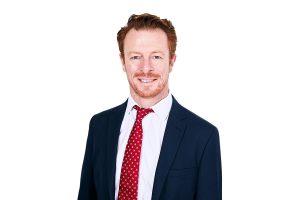The government believes a new Infrastructure Levy will ensure developers pay a fair share towards supporting communities, but Grant Leggett of Boyer London believes the proposals do not simplify contributions and could lead to greater complexity
The Levelling Up Bill is now back on the political agenda, albeit not without controversy. One of its key policies is for an Infrastructure Levy: “a simple, non-negotiable, locally set Infrastructure Levy will ensure that developers pay their fair share to deliver the infrastructure that communities need”.
How can the infrastructure levy be calculated?
The levy would be calculated on a final gross development value of a scheme or phase of a scheme. It is intended to replace the Community Infrastructure Levy (CIL), Section 106 and affordable housing contributions with a single, flat-rate levy based on the final sale values of a development.
So as it stands, a levy (CIL), in-kind developer contributions (S106) and affordable housing would be replaced with a higher levy and in-kind developer contributions (which may or may not include affordable housing).
I would welcome a change to what is a broken system. But unfortunately, the Infrastructure Levy doesn’t achieve this.
Affordable housing and financial viability
Private developers and housebuilders are not best placed to deliver affordable housing and most recognise this, either selling off plots allocated for affordable housing or working with an RSL as a delivery partner.
Furthermore, in the years that pass between planning permission and the signing of an S106 agreement, market or legislative conditions move on. This can have significant impacts on the financial viability of a development, which in practice often results in a scheme only becoming viable through a reduction in affordable housing.
The replacement of the CIL is long overdue
In its original form, the CIL was intended as a simple levy that allowed developers to budget for infrastructure payments early in the development process.
However, when used in parallel with S106 agreements, the CIL became overly complex. It does not yield the necessary funds to pay for the infrastructure needs and does not work well for larger strategic sites, particularly around ensuring that onsite infrastructure provided by the LPA is delivered in step with the development.
The agreement of a set levy would reduce these last-minute, multi-party negotiations on both infrastructure and affordable housing, resulting in more certainty for local authorities.
In a climate of rising land values, greater land value uplift could be captured for local authorities. Developers would have the benefit of “patient capital” as a result of the payment being made on completion of the scheme.
For local authorities, the delay in the payment being received would, according to recent news reports, be circumvented by new rules allowing them to borrow against future infrastructure levy revenues. This would provide the substantial advantage of enabling the development of infrastructure for major new settlements at an early stage.
The question is whether all local authorities will have the appetite to borrow against this fund, particularly as authorities can currently borrow against CIL funding, but many choose not to.
The affordable housing sector is severely underfunded
The challenge, at least for some local authorities, will lie in their ability to deliver affordable housing and other elements of infrastructure. The proportion of homes provided by councils dropped from 46% in 1977 to 2% in 2019. Years of underfunding have resulted in a considerable reduction of technical planning and architecture teams within local authorities. Land ownership will be an issue for many: where appropriately located municipal land is in short supply, it will be necessary for councils to bid against private sector housebuilders.
Additionally, if this new approach to social housing leads to the creation of new council housing estates, the aspiration of “pepper-potting” privately owned and affordable housing will end, ultimately resulting in a return to the council housing “ghettos” of the 1970s.
And there are many other issues. The introduction of any new tax would require cross-party support to avoid landowners simply waiting for a change of government before bringing forward land for development (in the belief that a different government might repeal any new legislation, allowing a greater future land price to be secured); the level of taxation must be set at such a rate with raises necessary funds without stymying the speculative land market; and local authorities will require the necessary skills to oversee the administration of the new levy.
Furthermore, the financial benefit of any change may take some time to filter through, as much land around existing settlements is already tied up under option agreements.
It is yet to be confirmed whether the Infrastructure Levy would be imposed at a standard rate. This seems unlikely because of the country’s considerable disparity in land values. Still, the determination of the levy at a regional or local level would be a considerable burden. It could result in an inconsistent delivery of new homes across the country – and one which runs counter to the levelling up agenda itself.
The major benefit of such a change is to untangle developers from the lengthy negotiations currently faced and deliver more certainty to local authorities – but there is a lot of detail to work through before this can be achieved.
Grant Leggett

Head of London planning team
Boyer
Tel: +44 (0)203 268 2018














